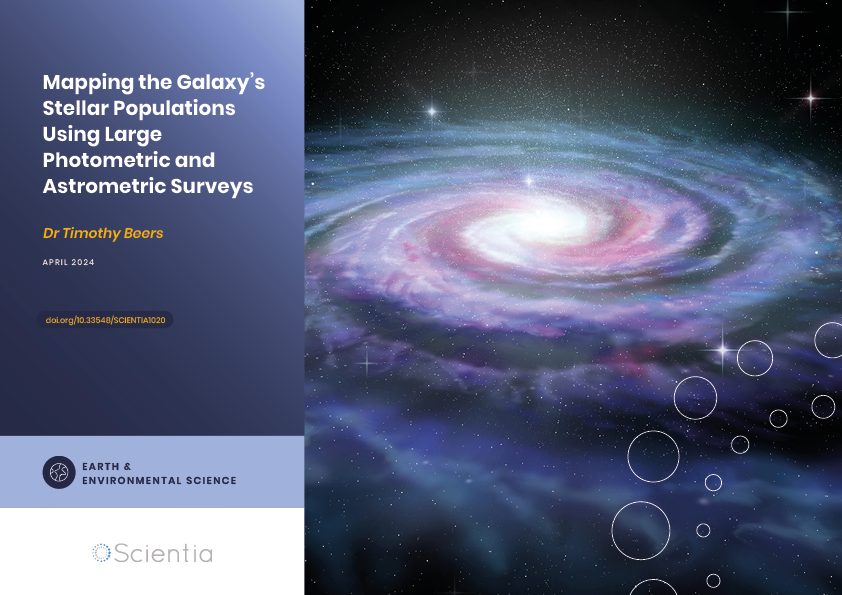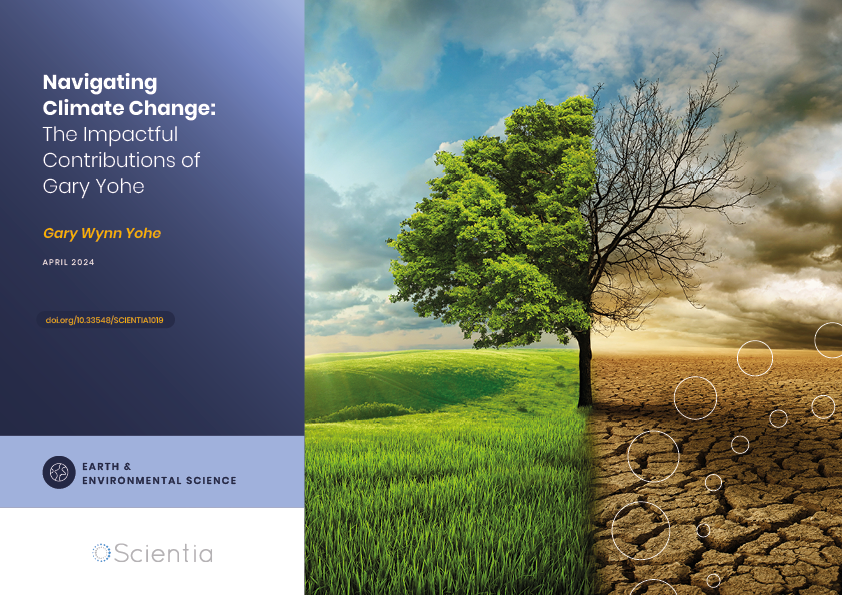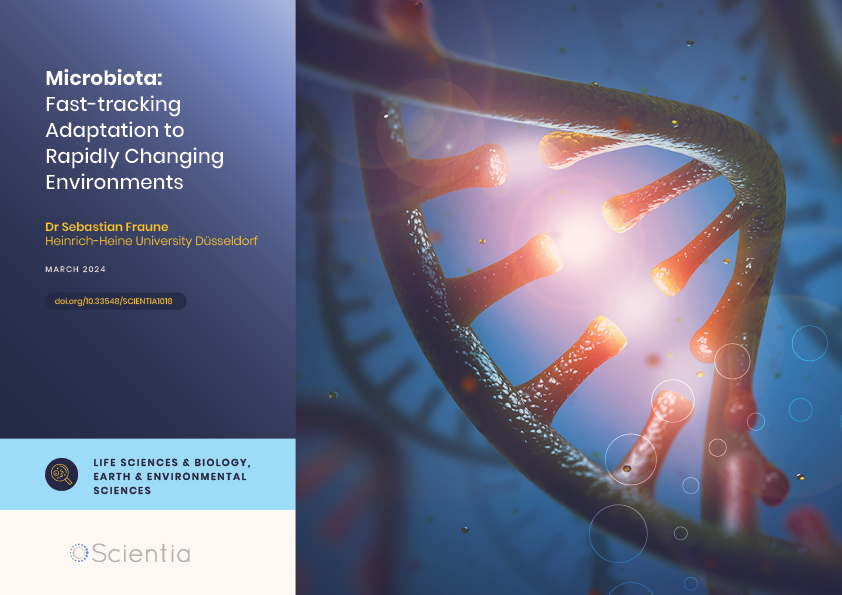Dr Tim Wilms | Recreating Rocky Reefs to Restore Marine Populations
Much research has focused on Single Large or Several Small (‘SLOSS’) habitats for the preservation and restoration of biodiversity. Many studies have been carried out in terrestrial environments but far fewer have looked at marine systems. However, it is unwise to make conclusions about the marine environment based on studies carried out on land. Together with colleagues, Dr Tim Wilms from the Technical University of Denmark is recreating lost rocky reef habitats and surveying these sites to see how they impact the return of vital marine species to the area.
Geogenic Reef Ecosystems
When we think of healthy and thriving marine communities, we tend to envisage colourful coral-rich reefs teeming with shoals of fish and sea creatures. Geogenic reefs – their non-biological counterparts – play an equally important role in marine ecosystems but are considerably less well-known and understood. Made up of boulders or smaller rocks protruding from an otherwise smooth, soft-substrate seafloor, geogenic reefs provide an important hard surface for the initial settling of algae and larvae that would otherwise be carried past by water currents.
The settlement and growth of algae and sessile immobile creatures such as bivalve molluscs provide a source of food which attracts fish and other sea creatures. Structures in and around the rocks such as holes, ledges and crevices provide shelter in which numerous mobile marine creatures and fishes may flourish and grow. This attracts larger predators from afar, and thus, a functioning geogenic reef ecosystem is born.
The Baltic Sea
Formed by glacial erosion over the past few ice ages, one of the world’s largest inland brackish seas – the Baltic Sea – is a north-eastern arm of the Atlantic Ocean bordered by nine countries. Acting almost as one large estuary for the many rivers flowing into it, the Baltic Sea varies greatly in levels of salinity across the basin and consequently, the richness of species found within it also varies. Despite nearly a quarter of the seabed being a ‘dead zone’, the Baltic Sea is home to a mixture of both freshwater and marine species, including species with high commercial value such as cod, sprat, herring and salmon.
The human-led degradation of the sea’s coastal environments has been driven by overfishing, eutrophication (in which agricultural runoff increases the nutrient load of the water), and the removal of rocks from the seabed for use as construction materials. On top of this, the Bornholm Basin in the southern Baltic Sea served as a dumping ground for chemical weapons after World War 2, although the biological effects of releasing more than 10,000 tons of highly toxic agents into the Baltic Sea waters remain largely unknown.
A Rocky Road to Recovery
The Flensborg Fjord in the southwestern Baltic Sea is situated east of the Danish/German land border, and was the focus for Dr Tim Wilms of the Technical University of Denmark and his team in a recent study. This region has been subjected to huge levels of rock extraction for construction materials, with over 10,000 acres of geogenic reef being removed from Danish waters alone over the 20th century.
Like the rest of the Baltic Sea, this region is home to important predatory Baltic cod (Gadus morhua). This species utilises rocky reef environments throughout the lifecycle, not only to find prey items but also as a shelter from larger predators such as seals. Similar to other areas, cod stocks have faced the detrimental effects of overfishing, and in the case of the Baltic cod, this eventually lead to a population collapse. Despite the prohibition of rock extraction from Danish waters in 2010, the previous permanent removal of important hard substrate for habitats has rendered the ecosystems in the area unable to recover fully without positive human input.
Dr Wilms and his team wanted to test whether recreating lost habitats would allow for the successful regeneration of these degraded ecosystems, and if this method could be one piece in the puzzle trying to recover Baltic cod populations.

The restored reefs were monitored using remote underwater video systems, a non-invasive method to survey biodiversity and the abundance of marine organisms.
Addressing a Longstanding Debate
A longstanding debate in conservation biology is on the importance of Single Large or Several Small (SLOSS) habitats for ecosystem restoration. The majority of SLOSS studies examining marine environments have shown that Several Small habitats have greater benefits than a Single Large habitat, despite the responses of interest differing between studies.
In a marine setting, geogenic or boulder reefs are an ideal habitat to examine the importance of SLOSS for restoration ecology due to their relative isolation from other habitats and the possibility to manipulate their spatial arrangement. Studying boulder reefs also provides important ecological data input that can be taken into consideration in the construction of new hard coastal management schemes such as sea walls and other ecological engineering schemes.
Reef Restoration
Dr Wilms and his team selected a soft-bottomed sandy area as their study site, a region historically featuring geogenic reefs. A before-after control-impact sampling methodology was carried out across six well-spaced sample sites of equal area and water depth.
During pre-restoration sampling, all six sites were surveyed daily by the deployment of 3–4 remote underwater video systems per site that were set to record for 2 minutes per hour. Video footage recorded the presence of any marine species in the frame, and a side scanner was used to scan the sea floor for the desired substrate (i.e., sandy bottom).
Using rocks taken from a Norwegian quarry, reef restoration was carried out on four of the sites, leading to two sites containing a Single Large reef, two sites containing 16 Several Small reefs in a 4×4 configuration (of the same rock diameter and volume as the Single Large reef), and two sites remaining as control sites. Surveying was then carried out again across all six sites 6 months post-restoration.
What Fish Did They Find?
The relative abundance of each species was measured by analyzing each video frame and counting the maximum number of obvious individuals, both mobile pelagic (found within the water column) species such as herring or cod and slow-moving benthic (ground-dwelling) species such as starfish. Numbers of individuals were counted per frame to prevent double counting and identified to the lowest possible taxonomic category. Due to the lack of a downward-facing camera, sessile (immobile) species were excluded from the specific species count, but the total proportion of vegetation or boulder cover was estimated by what was visible within each video frame.

Dr Wilms and his team visited the study area in Flensborg Fjord on a daily basis to collect thousands of video clips. Left to right: Johan M. Sørensen, Dr Tim Wilms, Carl Baden.
Oh My Cod, That’s Amazing!
In terms of species abundance, variations were found between Single Large and Several Small reefs. For example, sand gobies (Pomatoschistus sp.) were found in higher abundance at Several Small reefs. These soft-bottom species are often found in lesser numbers on large reef systems but were found to thrive in and around areas between patches of reef.
Importantly, not just environmentally but also with positive commercial implications, cod numbers were found to have increased dramatically around the restored reef sites. Cod sightings increased on average by around 60 times more at Single Large reefs than at control sites, and a whopping 130 times more than the control at Several Small reefs! The data also suggest a probability of nearly 99% of a positive restoration effect on cod abundance – an incredible improvement over such a short period since the reefs were constructed.
And Now We Come to the Fin-ish
A revisit to the survey sites 3 years later found large numbers of juvenile cod sheltering within and feeding around the reef structures. The presence of juvenile fish suggests the successful establishment of a flourishing and productive ecosystem.
The results from this survey are particularly encouraging in indicating that the restoration of geogenic reefs in areas where they have been depleted can have overwhelmingly positive impacts on the abundance of reef fishes found in an area, and the creation of a functioning ecosystem. Despite still not having an answer to the SLOSS debate, it is clear that both types of restoration methods have positive effects over time.
While a positive response to reef restoration efforts was observed from the most prominent reef species in the area, Dr Wilms warns that this alone will not be sufficient to recover and maintain a healthy and thriving ecosystem unless we work alongside other measures to protect the environment from damaging activities such as overfishing and nutrient overload.
SHARE
DOWNLOAD E-BOOK
REFERENCE
https://doi.org/10.33548/SCIENTIA913
MEET THE RESEARCHER

Dr Tim Wilms
Technical University of Denmark (DTU Aqua)
Kongens Lyngby
Capital Region, Denmark
Dr Tim Wilms graduated from Utrecht University with a BS degree in Geological and Earth Sciences in 2010. After gaining a Master’s degree in Marine Biology from the University of Groningen, Dr Wilms progressed to complete a PhD in Marine Sciences in 2022 from the Technical University of Denmark. He now works as an applied marine ecologist working mainly with non-invasive monitoring methods and marine habitat restoration. Having conducted several reef restoration projects as part of his PhD, his interests as a postdoctoral researcher are now applying his knowledge of rocky reef systems to ecologically enhance artificial structures in the marine environment that utilise hard substrate to co-benefit human requirements alongside the natural marine environment.
CONTACT
W: https://orbit.dtu.dk/en/persons/tim-wilms
T: https://twitter.com/dtucoastaleco
KEY COLLABORATORS
Pauli H. Norðfoss, Technical University of Denmark, Lyngby, Denmark
Henrik Baktoft, Technical University of Denmark, Silkeborg, Denmark
Josianne G. Støttrup, Technical University of Denmark, Lyngby, Denmark
Bo M. Kruse, Als Stenrev, Nordborg, Denmark
Jon C. Svendsen, Technical University of Denmark, Lyngby, Denmark
FUNDING
Danish Rod and Net Fishing License Funds
European Maritime and Fisheries Fund
Vattenfall
Velux Foundations
FURTHER READING AND RESOURCES
T Wilms, P Norðfoss, H Baktoft, et al., Restoring marine ecosystems: Spatial reef configuration triggers taxon-specific responses among early colonizers, Journal of Applied Ecology, 2021, 58(12), 2936–2950. DOI: https://doi.org/10.1111/1365-2664.14014
https://www.youtube.com/watch?v=Ha1dri4hGiI&ab_channel=DTUAquaBroadcast (Credit: Florence Ghestem)


![]()

REPUBLISH OUR ARTICLES
We encourage all formats of sharing and republishing of our articles. Whether you want to host on your website, publication or blog, we welcome this. Find out more
Creative Commons Licence (CC BY 4.0)
This work is licensed under a Creative Commons Attribution 4.0 International License. 
What does this mean?
Share: You can copy and redistribute the material in any medium or format
Adapt: You can change, and build upon the material for any purpose, even commercially.
Credit: You must give appropriate credit, provide a link to the license, and indicate if changes were made.
SUBSCRIBE NOW
Follow Us
MORE ARTICLES YOU MAY LIKE
Dr Lifei Wang | Can Species Distribution Models Inform Us About Future Ecosystems?
The world is buzzing with news about how human activities and climate shifts are reshaping our ecosystems. Have you ever wondered how life will adapt to this rapidly changing world? Ecologists might be able to predict how different species will live in future using computer simulations. Dr Lifei Wang at the University of Toronto Scarborough investigates how different stimulations work under varying conditions to provide new insights into what may lie ahead.
Dr Timothy Beers | Mapping the Galaxy’s Stellar Populations Using Large Photometric and Astrometric Surveys
Astronomers often use spectroscopic (electromagnetic radiation) data and astrometric (motion and positional) data to develop working models describing our Galaxy. Dr Timothy Beers from the University of Notre Dame and his collaborators in Korea and China combined large photometric (visible light) surveys and astrometric data to create multidimensional maps of a large part of the Galaxy. By highlighting significant inhomogeneities in stellar-chemical compositions, motions, and spatial distributions, Dr Beers and his colleagues provide valuable insights into how we can advance our understanding of the formation and evolution of our Galaxy.
Professor Gary Yohe | Navigating Climate Change: The Impactful Contributions of Gary Yohe
Professor Gary Yohe is a distinguished environmental economist whose work has been pivotal in shaping our understanding of climate change impacts, adaptation strategies, and policy frameworks. His interdisciplinary approach combines economics with environmental science, offering nuanced insights into global warming and its multifaceted impacts on natural and human systems. Professor Yohe equips us with the knowledge and strategies needed to navigate the complex and pressing challenges posed by climate change.
Dr Sebastian Fraune | Microbiota: Fast-tracking Adaptation to Rapidly Changing Environments
As climate change continues at an unprecedented pace, the processes of natural selection and genetic mutation can no longer fully explain how some organisms adapt to their rapidly changing environments. Dr Sebastian Fraune from Heinrich-Heine University and an international team of researchers are the first to demonstrate a causal relationship between changes in the microbiome and changes in thermal tolerance. They propose that microbiota-mediated transgenerational acclimatisation can account for how animals adapt to their environments in much shorter periods of time than classical theory would predict.





